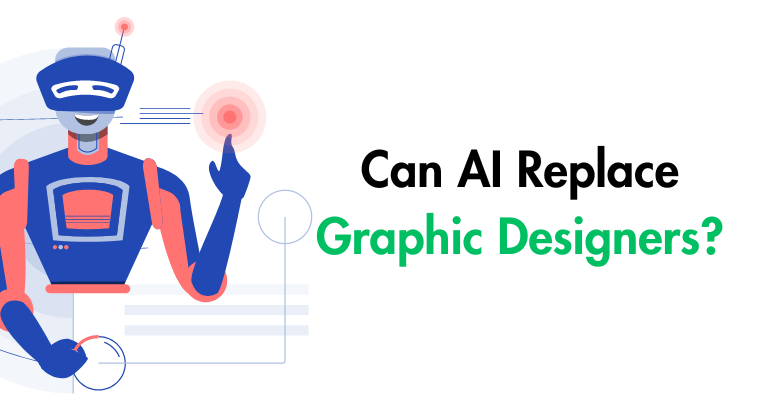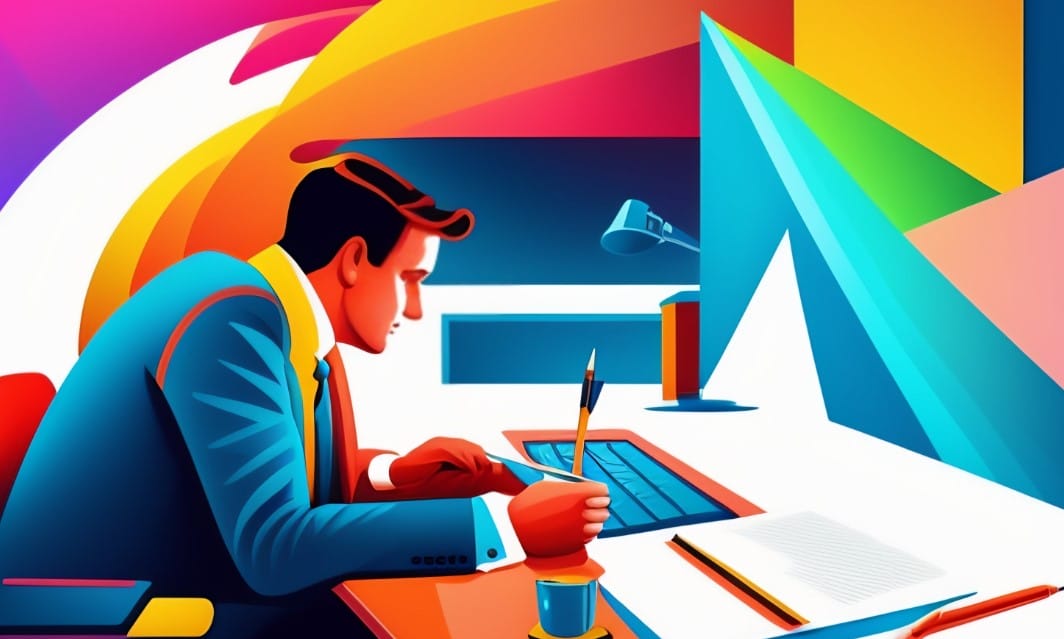
We live in an age where Artificial Intelligence (AI) has touched almost every aspect of our lives. From the way we shop to how we commute, AI’s influence is undeniable. But what about graphic design, a field rooted in creativity? Can AI truly replace the human touch?
Quick Answer: Ai will not replace Graphic Designers because they can’t have their creativity and thinking knowledge which humans have.
Evolution of AI in Graphic Design
Initial Automation: The journey of AI in graphic design began with basic tasks. Think cropping images, adjusting colors, and simple pattern recognitions. This automation was initially seen as a threat but soon became a boon, eliminating mundane tasks and streamlining processes.
Current Capabilities: Fast forward to today, and we have AI tools that can generate entire design layouts and logos, and even recommend design changes based on real-time user feedback.
Advantages of AI in Design
Time Efficiency: The clock’s ticking sound is familiar to any designer facing tight deadlines. Here, AI shines brightly. By automating repetitive tasks, it speeds up the design process, ensuring projects are delivered on time.
Data-driven Decisions: Beyond aesthetics, design is about functionality. AI, with its ability to analyze vast amounts of data quickly, can offer insights into user behavior. This means designs aren’t just pretty, they’re efficient.
Personalization Capabilities: In an age where personalization is key, AI tools can tailor designs to individual user preferences, ensuring higher engagement and satisfaction.
Limitations of AI in Creative Processes
Lack of Genuine Creativity: While AI can mimic styles and even combine them in innovative ways, it doesn’t “dream” or “feel.” It can’t produce a design that resonates with human emotions in the same way a human designer can.
Emotional Resonance and Cultural Context: Remember the last ad or poster that touched your heart? That’s the human touch. AI might miss nuances, emotions, and cultural contexts that only humans can perceive and integrate.
The Human Touch in Design

Understanding User Needs: Design is storytelling. It’s about conveying a message, evoking emotions, and providing solutions. While AI can analyze data, humans understand stories, feelings, and the intricate needs of other humans.
Evolving Design Trends: Trends change, influenced by cultural, social, and political shifts. Humans adapt, evolve, and sometimes even create these trends. AI can follow, but can it lead?
What To Do in the Future
Role of AI Tools: Instead of viewing AI as competition, why not see it as a collaboration? AI can be the tool that assists, while humans steer the ship, guiding it with their creativity and insight.
The Unreplaceable Human Designer: No matter how advanced AI becomes, there will always be a place for human designers. Their ability to understand, empathize, and create from a place of passion and emotion cannot be replicated.
FAQ
- Can AI create designs from scratch?
Yes, AI can generate designs, but they are typically based on existing data and patterns. - Is AI faster than human designers?
For repetitive tasks, AI can be faster. However, for intricate, detailed designs, a human touch might be preferred. - Will human designers become obsolete?
No. While AI can assist and enhance, the emotional, cultural, and creative aspects of design still require human expertise. - How do AI tools personalize designs?
AI can analyze user behavior, preferences, and past interactions to create tailored designs. - Are there AI tools available for designers?
Yes, there are numerous AI-powered tools for various design tasks, from image editing to layout generation. - How does AI understand design preferences?
AI algorithms analyze large datasets, often studying patterns from previous designs, user interactions, and feedback. Through this, they can predict or suggest designs that align with observed preferences. - What’s the biggest advantage of using AI in graphic design?
One of the main benefits is efficiency. AI can quickly perform tasks that might take a human much longer, especially repetitive or data-driven tasks. Additionally, AI tools can provide real-time analytics and adjustments based on user interactions. - Are there any renowned design platforms incorporating AI?
Yes, many modern design platforms and software are beginning to integrate AI to aid in tasks like image recognition, auto layouts, and even logo creation. - How reliable is AI in understanding cultural nuances in design?
AI largely operates based on the data it’s fed. If it has a comprehensive dataset that includes diverse cultural nuances, it can be more accurate. However, human intuition and understanding of subtle cultural shifts and meanings often surpass AI capabilities. - Does the use of AI compromise the originality of a design?
There’s a debate on this. Some argue that since AI relies on existing data, designs might lack true originality. Others believe that AI can combine elements in unique ways, leading to fresh concepts. - What skills should a graphic designer develop in this AI-driven era?
While mastering design principles remains paramount, a designer should also become familiar with AI tools in the market. Being tech-savvy and understanding how to collaborate with AI can set a designer apart. - Are there ethical considerations when using AI in design?
Absolutely. Issues like data privacy, potential job displacement, and the risk of creating homogenized designs due to over-reliance on algorithms are all ethical concerns. - Can AI predict design trends?
To some extent, yes. By analyzing vast amounts of online content and user interactions, AI can identify emerging patterns. However, predicting broader cultural shifts and their impact on design trends is still a largely human domain.
While AI has made impressive strides in the realm of graphic design, the debate isn’t about replacement but collaboration. AI tools can enhance the design process, but the essence of design, rooted in human experience and creativity, remains irreplaceable.






